Steck and Goettler: Five questions, five answers
He couldn’t stop thinking about it. When the Swiss top climber Ueli Steck solo climbed the South Face of 8027-meter- high Shishapangma in only ten and a half hours five years ago, he discovered a possible new direct line. This spring, the 39-year-old – along with the 37-year-old German professional climber David Goettler – returned to the 2000-meter-high wall to have a try at the new route. If everything works perfectly, they plan to descend from the summit via the north side, thus traversing the eight-thousander.
Before heading off to Tibet, Ueli and David acclimatized in the Everest region in Nepal – including trail-running over extremely long distances. I sent them five questions to their Base Camp at the foot of Shishapangma South Face.
Ueli and David, the pictures which you published on Facebook in recent weeks, remind me of Speedy Gonzales or Road Runner, two cartoon characters of my childhood: continuously in high speed mode, because hunted. At the same time each of you let us know that the other is really, really fit. Honestly, who of you is actually rushing whom? Or from what are you trying to escape?
![]() read more
read more
Minute of silence in Everest Base Camp
At 11:56 a.m. all hell broke loose. Exactly a year ago today, a magnitude 7,8 earthquake struck Nepal. About 9,000 people were killed, 23,000 were injured. However, these were only the victims registered by the government, it was probably more. Also on Mount Everest many people died on 25 April 2015. The quake triggered a huge avalanche on the nearby seven-thousander Pumori. It hit Everest Base Camp, 19 people lost their lives. On this anniversary of the disaster, climbers and the staff of the infirmary “Everest ER” gathered at the foot of the highest mountain on earth for a minute of silence – at 11:56 a.m.
![]() read more
read more
Helicopter transport flights to Everest high camps
Time does not stand still, even in Khumbu. Two things have changed dramatically in the region around Mount Everest between my first visit in 2002 and my second last March. Firstly, the sanitary facilities – on average – have become much more modern and cleaner than 14 years ago. Secondly, the aircraft noise has increased significantly. On a clear day, helicopters are flying – as I felt, steadily – through the valley from Lukla to Namche Bazaar and also further up towards Everest Base Camp.
![]() read more
read more
The unwilling Mr. Piolet d’Or
Actually, he finds it nonsense that mountaineers are awarded. “Basically it’s impossible to compare any climbs, because every climb has a different emotion,” Marko Prezelj told me a year ago during the “Piolet d’Or” celebrations, the “Oscar of the climbers”. “It’s bizarre. It’s like you are making love and making an article out of it. If it’s poetry, maybe it’s okay. But it is a thin line between romantic poetry and pornography.” As in 2015, Marko was again awarded the Golden Ice Axe in 2016. Last weekend, the Slovene received the prize in La Grave in the French Alps, along with his compatriot Urban Novak, the American Hayden Kennedy and the Frenchman Manu Pellissier – for their first ascent of the South Face of the 6176-meter-high Cerro Kishtwar in the Indian Himalayas. Thus Marko is now holding a record that he actually doesn’t want to have.
![]() read more
read more
Victory for common sense
For once, I must compliment the Chinese. The country’s authorities refused Tyler Armstrong the permit for climbing Mount Everest. As reported, the now 12-year-old American wanted to climb the highest mountain in the world from the Tibetan north side this spring. Tyler and his parents had hoped to get a “special permit” – as already in 2012 for the ascent of Kilimanjaro (5895 m, highest mountain in Africa) and in 2013 for Aconcagua (6962 m, highest peak in South America). But this time the Chinese stood firm. From my point of view, it’s a victory for common sense. Everest is no place for children, no matter how fit they are.
![]() read more
read more
Ten popular Everest errors
The Everest spring season is gaining momentum. The Base Camp on the Nepalese side of Mount Everest is filling. According to the government in Kathmandu, 279 climbers from 38 countries have registered for the highest mountain on earth. The Icefall Doctors have meanwhile prepared the route all the way up to Camp 2 at 6,400 meters. The teams who want to climb Everest from the Tibetan north side, have also received now their permits from the Chinese authorities and are heading to Tibet. It’s going to kick off there too. Before the media Everest season begins, I would like to correct some reoccurring errors.
![]() read more
read more
HACE, the hidden danger
20 doctors, nearly twice as many test persons. The Swiss research expedition to the seven-thousander Himlung Himal in fall 2013 had the objective to investigate the effects of high altitude on the human body. More than two years later, the first results are there to see. I have talked about it to Dr. Tobias Merz. The 46-year-old is a senior physician at the Department of Intensive Care Medicine at the University Hospital in Bern. Since his youth, Merz has been doing sports in the mountains. So it’s no coincidence that he has committed himself to high altitude medicine too. “In intensive care medicin a disease takes organ systems to the limits of the possible, in high-altitude medicine external conditions are responsible for this,” says Merz. Before going on expedition to Himlang Himal, he had already experienced high altitude as a climber in the Andes and the Himalayas. On the eight-thousander Shishapangma, Merz had reached a height of about 7,600 meters. He then had had to give up his own summit ambitions because he had been needed for a rescue. On Himlung Himal, he stood on the highest point.
Dr. Merz, in 2013 you reached the 7,126 meter-high summit of Himlung Himal. Do you feel somewhat queasy in hindsight if you look at your first research findings?
I already knew that high altitude climbing is a high-risk sport and that it takes you to limits of physiology and rationality. For me, the results were more a confirmation of what I had suspected and less a huge surprise.
But you have worked out something worrying for high altitude mountaineers.
![]() read more
read more
Miss Hawley: “I’m just a chronicler”
When I saw the Beetle, I knew I was right. I knew the street, but had no house number, only a rough description of where Miss Hawley is living in Kathmandu. But there it stood in the courtyard: the light blue VW Beetle, built in 1963. “The car is right, of course. Those Beetles are just incredible durable,” says the legendary chronicler of Himalayan mountaineering. For decades, the US-American has driven with the light blue car in front of the hotels in Kathmandu to interview climbers about their expeditions in the Himalayas. However, the 92-year-old is no longer driving her Beetle by herself, she has a driver. “I can’t drive a car with a walker”, says Elizabeth Hawley and grins. Since she broke her hip, she is not quite as mobile as before.
![]() read more
read more
Securing Everest jobs of the future
He is one of the Sherpas who stay well clear of Mount Everest this year. “I simply haven’t got the time,” says Dawa Sherpa Gyaljen, when I meet him in a cafe in Kathmandu during my visit Nepal. The 29-year-old is working for a trekking operator. “Maybe I’ll get the chance in 2017 again. I have been asked if I would lead an Everest team next year. Let’s see whether I can take as much vacation.” The Sherpa, who was born in the Khumbu region in a small village west of Namche Bazaar, has reached the highest point on earth already four times: in 2005, 2007, 2008 and 2009. The upcoming spring season could set the course for the future, Dawa believes.
![]() read more
read more
Safe in Khumbu
Safety is primarily a feeling. Often we don’t even realize the lurking objective danger. And if we do, then usually only if we have no other option than facing the danger. A week ago I have returned from my trekking in Khumbu, the region around Mount Everest. Eleven months have passed since the devastating earthquake in Nepal. I think that my senses were quite sharpened because it was an objective of my journey to inform myself about the consequences of the quake. I can send all the people who want to travel to the region for trekking or climbing on their way with my experience: I felt perfectly safe in Khumbu.
![]() read more
read more
Dawa Steven Sherpa: “There is a lot of pressure”
A 15-meter-high climbing wall in the middle of the tourist quarter Thamel in Kathmandu – who would have thought it? “The wall is the nursery for the sport of climbing in Nepal”, Dawa Steven Sherpa tells me. “All of the young ambitious Sherpa climbers have trained here.” I meet the 32-year-old in the office of “Asian Trekking”. Along with his father Ang Tshering Sherpa, Dawa Steven is managing the leading Nepalese expedition operator. I talk with him about this spring season on Everest – after the avalanche in the Khumbu Icefall in 2014 that killed 16 Nepalese climberes and the earthquake in 2015, that triggered an avalanche from the 7000er Pumori that hit Everest Base Camp killing 19 climbers.
Dawa Steven, Asian Trekking once again offers an Eco Everest Expedition this spring. Will it take place?
Yes, it will start from Kathmandu on 6 April. So far we have 14 foreign members and 21 Sherpas but this number will change by the end of the month.
Do you notice that there is a lower demand this year?
![]() read more
read more
Happy Easter!
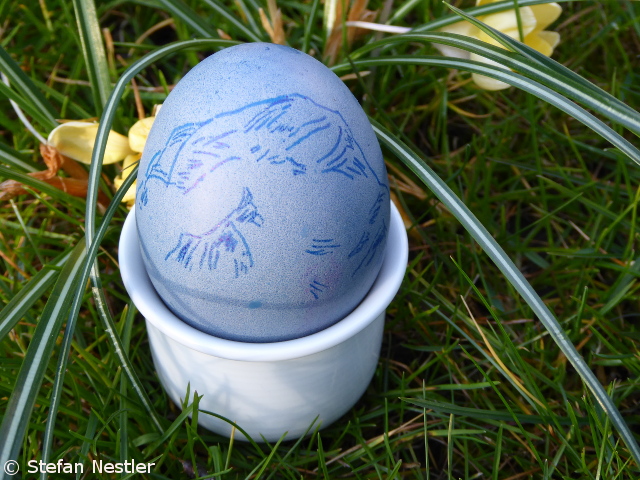 I wish you all and your loved ones Happy Easter. And the “Picasso from the river Rhine” 😉 is confronting you with another easter riddle: Which mountain have I conjured onto the egg?
I wish you all and your loved ones Happy Easter. And the “Picasso from the river Rhine” 😉 is confronting you with another easter riddle: Which mountain have I conjured onto the egg?
P.S.: Today I returned from Nepal. Next week, there will be some more stories from there.
Burning mountains
Perfect timing. Just when we reach the 5380-meter-high summit of Gokyo Ri, the clouds around the top of Mount Everest, Lhotse and Makalu turn orange. „The mountains are burning“, our guide Dipak Giri says. Step by step the first sunlight also meets the other summits around us: the eight-thousander Cho Oyu, the six-thousanders Cholatse, Kantega, Thamserku and in the distance Gaurishankar. A 360-degree panorama which is without equal. We were the only ones, who set off from Gokyo at 4,770 meters at 4 a.m. to admire this unique spectacle. Now we are sitting below the prayer flags and hardly believe our eyes.
![]() read more
read more
“The Everest record means nothing to me”
Phurba Tashi is a man of few words. The 45-year-old replies friendly but shortly. “This year, I will definitely not climb Mount Everest”, Phurba tells me when we sit down for a few minutes on a bench in front of his “Tashi Friendship Lodge” in the village of Khumjung. Actually, he has no time to talk to me because his family has gathered for a religious ceremony to commemorate Phurba’s parents who both died in the past six months. Some Buddhist monks have come to his Lodge. “The death of my parents is also the reason why I renounce the ascent this time,” says Phurba.
![]() read more
read more
The Sherpas’s ability to forget
“I don’t have any ambitions to climb Mount Everest,” says Ang Dorjee Sherpa. “Too dangerous! Finally, I have a wife and three children.” However, the 47-year-old was a member of Everest expeditions twice. At the end of 1991, Ang Dorjee worked as “Mail Man” for a Japanese expedition who wanted to climb the mighty Southwest Face for the first time in winter. The Sherpa brought the news of the failure at 8,350 meters as “postal runner” into the valley. Two years later the Japanese were back again – and successfully: A total of six climbers reached the summit on a partially new route, the first team on 18 December 1993. The first ascent of the wall in (meteorological, not calendrical) winter was done. That time, Ang Dorjee did not play the postman, but worked as a cook for the Japanese.
![]() read more
read more



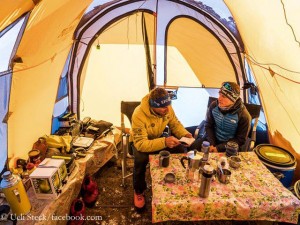

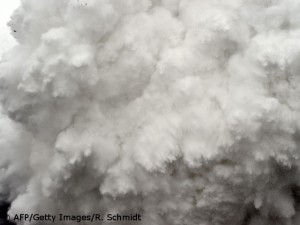
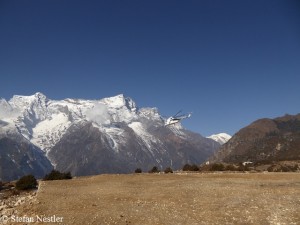
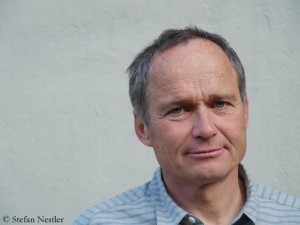
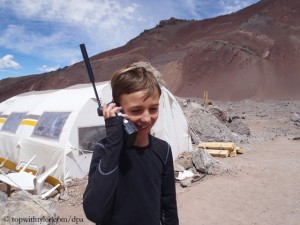
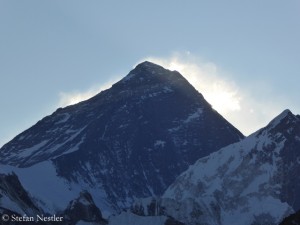
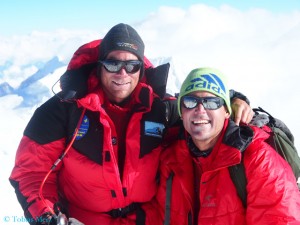
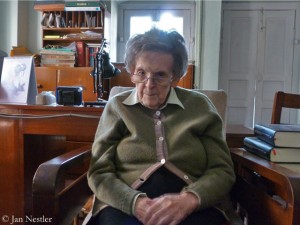
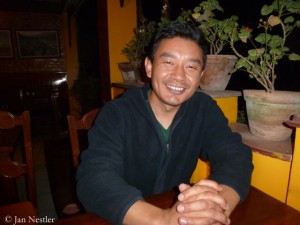
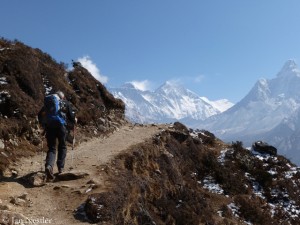
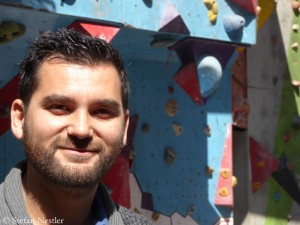
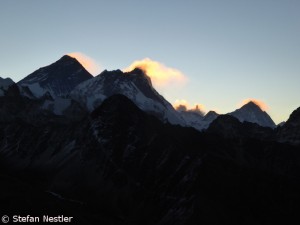
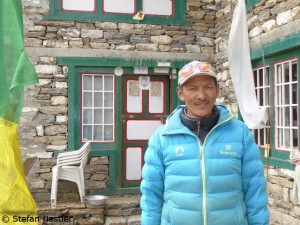
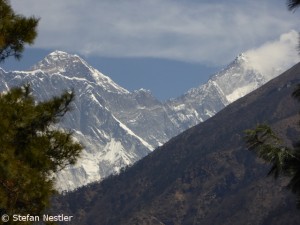





Feedback